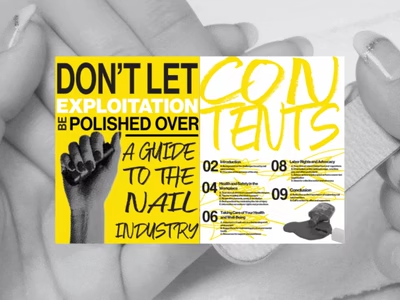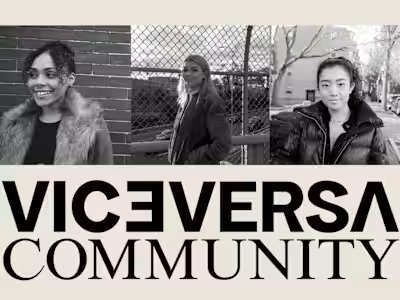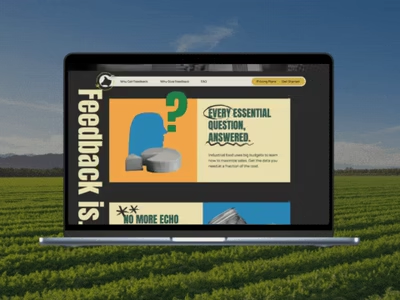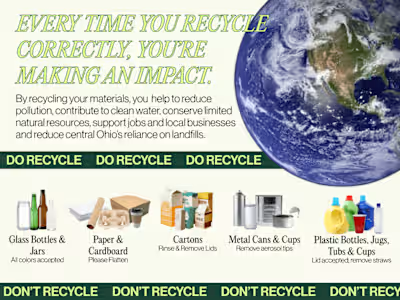🌿 Ekosystem
🌿 An app connecting users to eco-resources, fostering green habits, building an eco-community, and driving environmental change.
Overview 🔎
Ekosystem is an app aimed at fostering a sustainable future. It helps form eco-friendly habits through interactive challenges, guides users to green products and services, builds a community of eco-aware individuals, and prompts political action for environmental change. By integrating these features, Ekosystem enables users to lead a green lifestyle and inspire systemic sustainability improvements.
Challenge 👀
Aspiring to live a greener life and make sustainable choices is a noble goal, but the path toward a more eco-friendly lifestyle can be a daunting journey. According to a study by the International Institute for Sustainable Development, 66% of consumers globally want to live more sustainably. Still, four out of five people find it challenging to comprehend what everyday actions they can take toward this endeavor. This statistic underscores the overwhelming nature of adopting eco-friendly practices for many individuals.
Solution ✨
Ekosystem is a transformative app that promotes sustainable living by empowering users. It offers tools for green habit formation, a directory of sustainable products, and a platform for community interaction. Beyond this, it provides resources for environmental advocacy, encouraging users to participate in political action. It aims to inspire users to shape a more sustainable future.
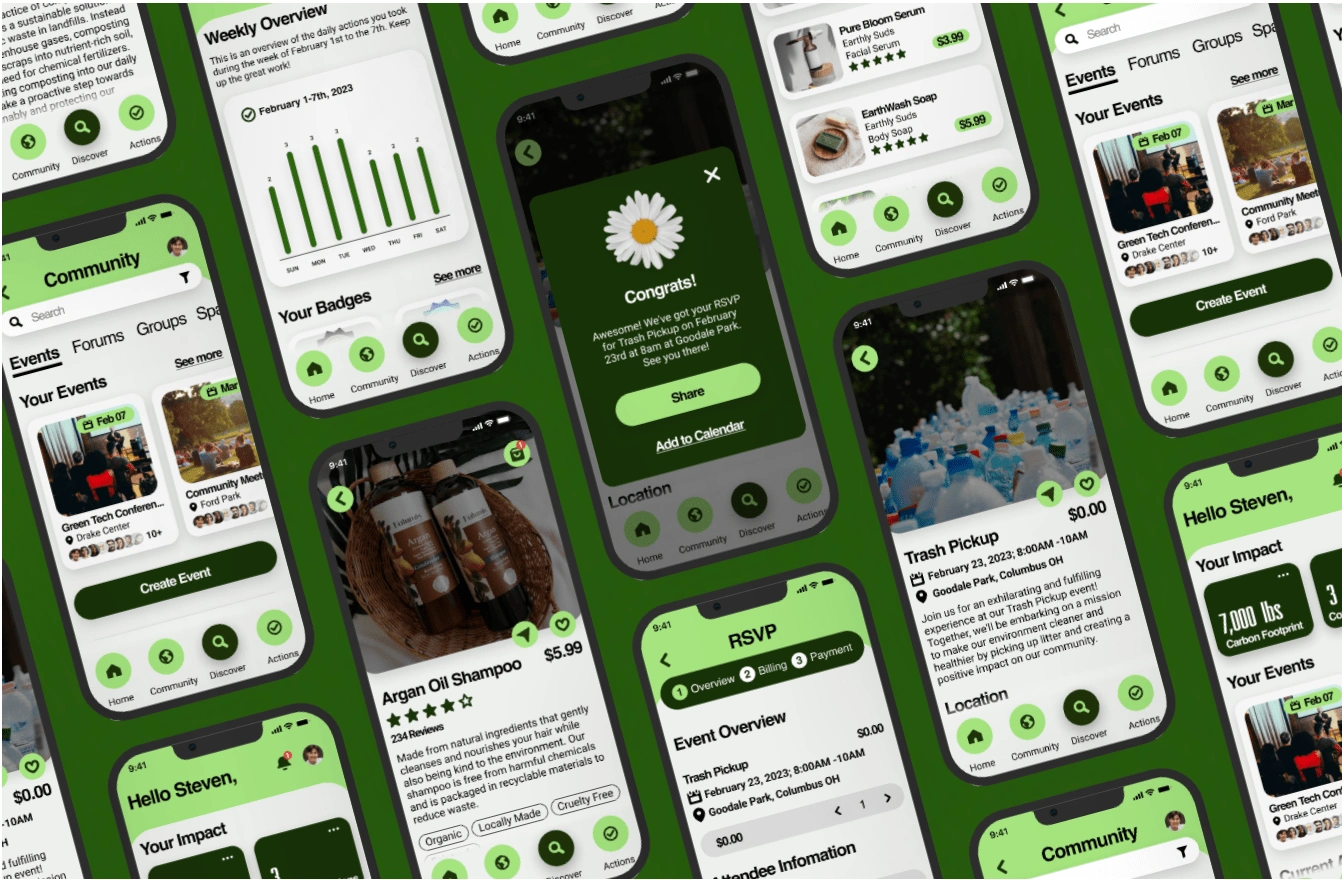
Research 🔬
Secondary Research
As I dove into the research, it quickly became clear that globally, sustainable living challenges span multiple daily life aspects, including responsible consumption, waste reduction, energy efficiency, and environmental advocacy. A notable gap exists between the high level of expressed environmental concern and the limited actions taken due to a lack of accessible information, affordable eco-friendly options, and supportive communities.
Primary Research
To ensure Ekosystem is user-centric, I conducted a mixed-method primary research involving surveys and in-depth interviews. Participants were recruited via social media and a screener survey, yielding 22 insightful responses. Surveys were designed to capture participants' current sustainable practices, challenges, and motivations.
Interviews
I conducted five semi-structured interviews via video call, focusing on the barriers to and motivators for sustainable living. These interviews provided valuable insights into users' experiences and needs regarding sustainability. Through open-ended discussions, I explored topics such as current habits, challenges, motivations, and expectations related to sustainable practices. The information gathered guided the design process for Ekosystem, ensuring that it effectively addresses user needs and promotes sustainable living.
Affinity maps
Through affinity mapping, I found meaningful relationships between the raw qualitative data gathered from user interviews. It helped in uncovering the key themes and patterns around the user's feelings, behaviors, and thoughts related to eco-friendliness, such as mindset and motivation, accessibility and affordability, societal and community influences, current knowledge and habits, and support and resources.
Empathy maps
By visualizing the thoughts and feelings of users in their context of eco-friendliness, I was able to see the world from their perspectives, giving us insights into their challenges and opportunities. This allowed me to empathize with the users at a deeper level, guiding my design decisions & and ensuring that the product would resonate with and meet the needs of our target audience.
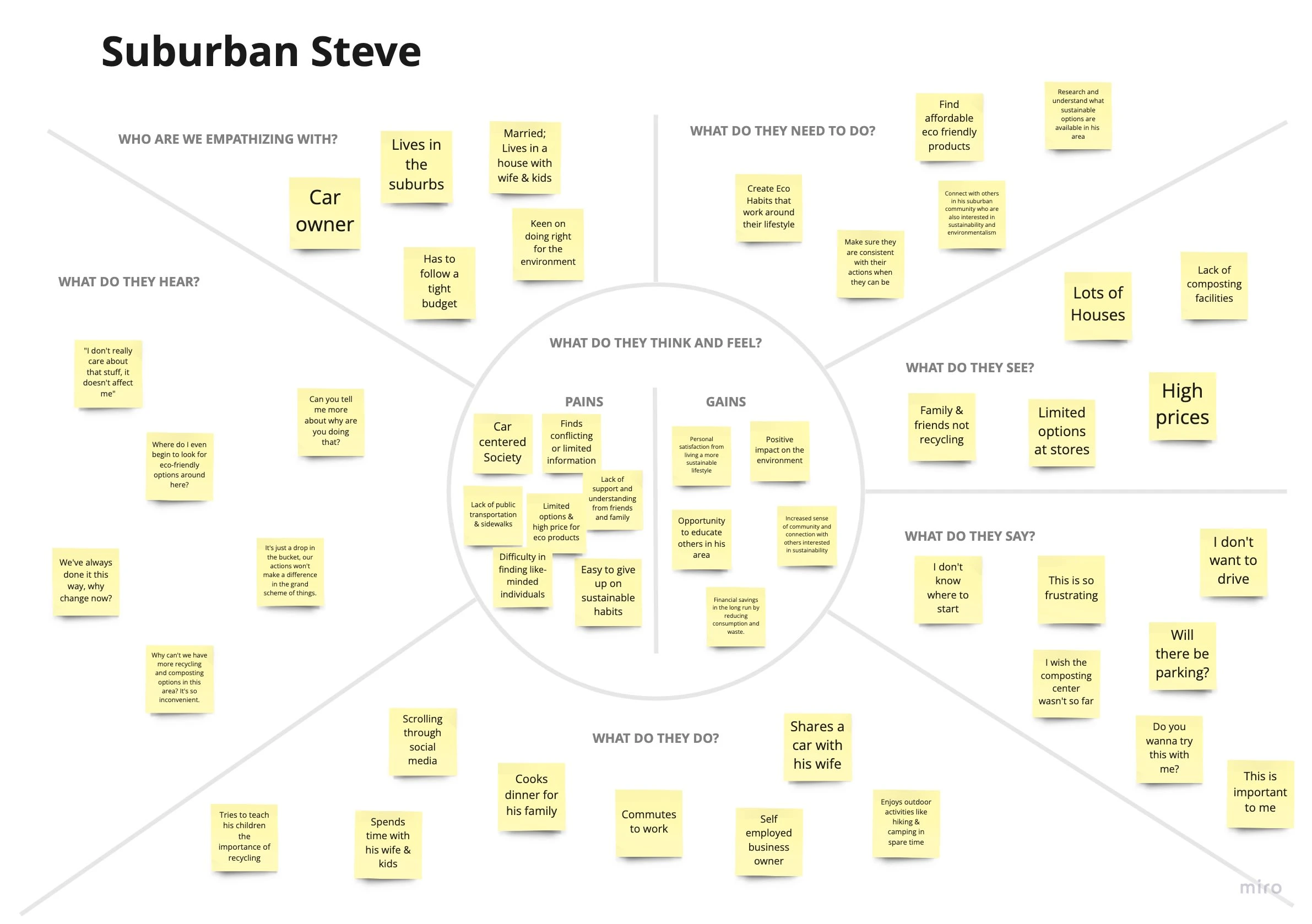
Personas
Creating the personas "Suburban Steve" and "City Girl Carmen" was crucial to humanize and personalize the data from user interviews, enabling a better understanding of the challenges faced by different segments of the target audience. These personas guided me in ensuring solutions were tailored to address the specific needs and aspirations of Carmen, representing overwhelmed urban dwellers, and Steve, representing those struggling with incorporating eco-friendly habits due to a lack of information.
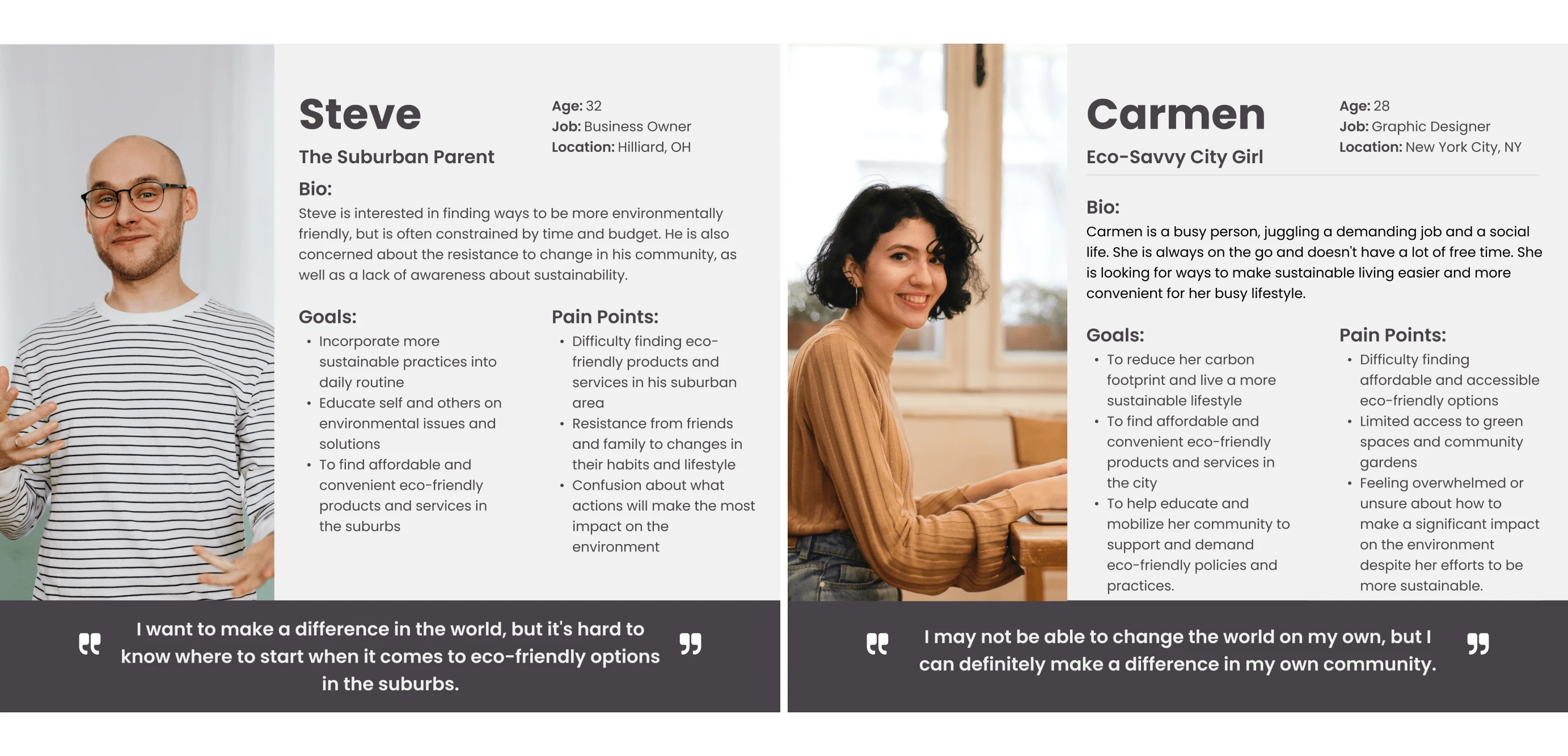
Ideation 🤔
How Might We's
By identifying the pain points and challenges faced by my personas, I aimed to create innovative and user-centered solutions for my eco-friendly app. Transforming these obstacles into opportunities through "How might we...r" statements allowed me to explore a wide range of ideas and significantly impact the design process.
Statements
How might we help people easily find and access eco-friendly products and services in their area?
How might we make sustainable practices more affordable for people in their area?
How might we empower people to advocate for policy change in their city to promote sustainability?
How might we make it easier for people to integrate sustainable habits into their lifestyles?
How might we help people connect with others in their community who are also interested in sustainability?
How might we increase awareness and education about sustainability in their area
Ideation Sketches
For the ideation stage, my goal was to generate as many ideas as possible to address the challenges outlined in the HMW statements. To do this, I used techniques such as Crazy 8s & sketching and prototyping. I also made sure to challenge my own assumptions and consider multiple perspectives to encourage creative thinking.
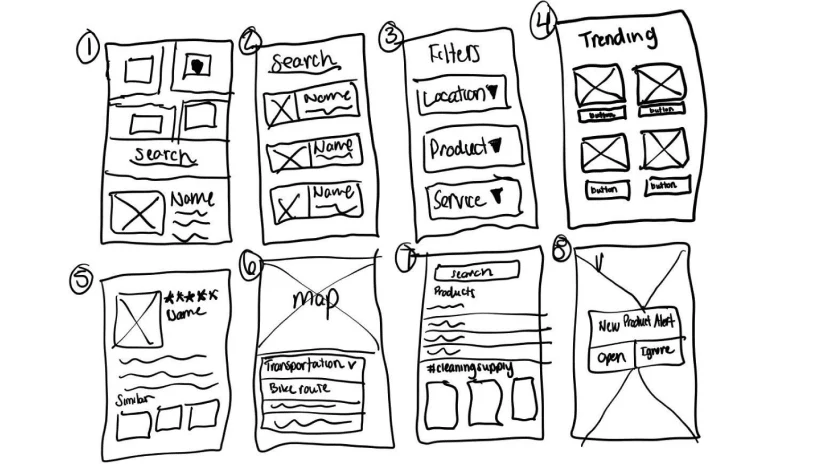
User Stories
User stories were used to prioritize user needs and align the app design with their goals for eco-friendly habits. This approach ensured an understanding of key tasks and requirements for each persona, guiding feature development. By ranking user stories based on urgency, the design process focused on the most critical features, resulting in an impactful app that met users' needs effectively. Here are some of the prioritized user stories, listed in order of importance:
As City Girl Carmen, I want to be able to search for eco-friendly products and services in my area so that I can make sustainable choices in a convenient and accessible manner.
As City Girl Carmen, I want to be able to access information about sustainability in my area so that I can learn more and educate others in my community.
As Suburban Steve, I want to be able to compare prices for eco-friendly products and services with traditional options so that I can see the cost difference and make informed decisions.
As Suburban Steve, I want to be able to connect with other people in my community who are interested in sustainability so that I can find support and information about sustainable practices.
Site Map
Having identified the crucial pages and features supporting each persona's goals and tasks, I organized them into a site map. Consideration of the overall user experience and information flow ensured easy access to desired content, while the site map effectively communicated the app's design vision and user-centric structure.
User Flows
In the user flow creation process, I analyzed user stories to identify critical tasks for each persona such as RSVPing to eco-friendly events, creating habits & finding new products. Mapping out each step, decision, and interaction, I aimed for a seamless and user-friendly experience in adopting eco-friendly habits.

Sketches
With a focus on layout, structure, and content, I used simple shapes and lines to bring the app's key pages and features to life. This imaginative exploration allowed me to experiment with various concepts, breathe life into content organization, and craft dynamic user flows, fueling my passion for creating an exceptional user experience.
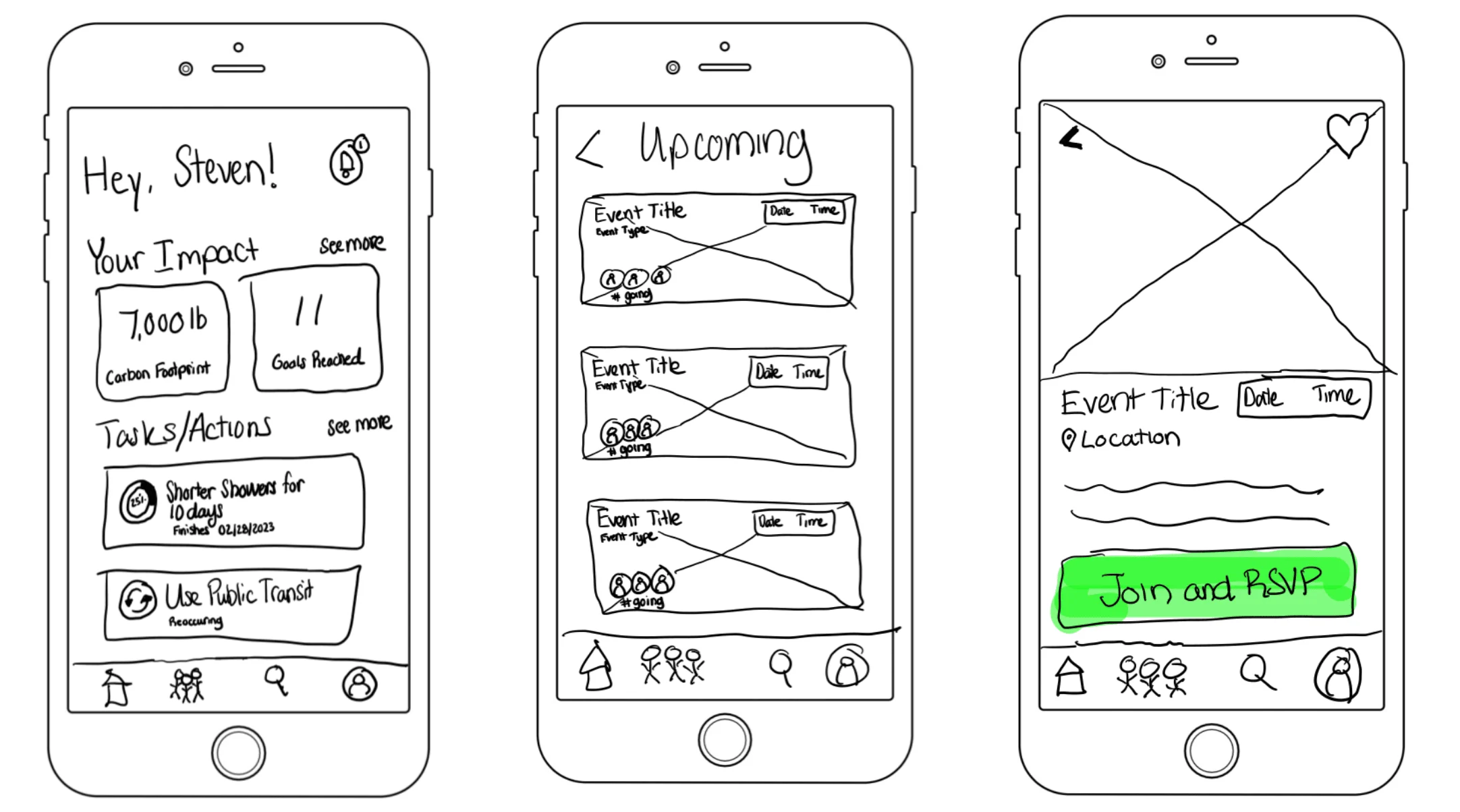
Design 🎨
Wireframes
My wireframes proved invaluable in the early detection and resolution of potential usability issues. Iterations during the wireframing phase led to streamlined navigation, intuitive layouts, and interactive features tailored to the personas. This iterative process taught me the importance of flexibility and adaptability in designing an intuitive and user-friendly app, as initial assumptions were continually refined as the concept took shape.
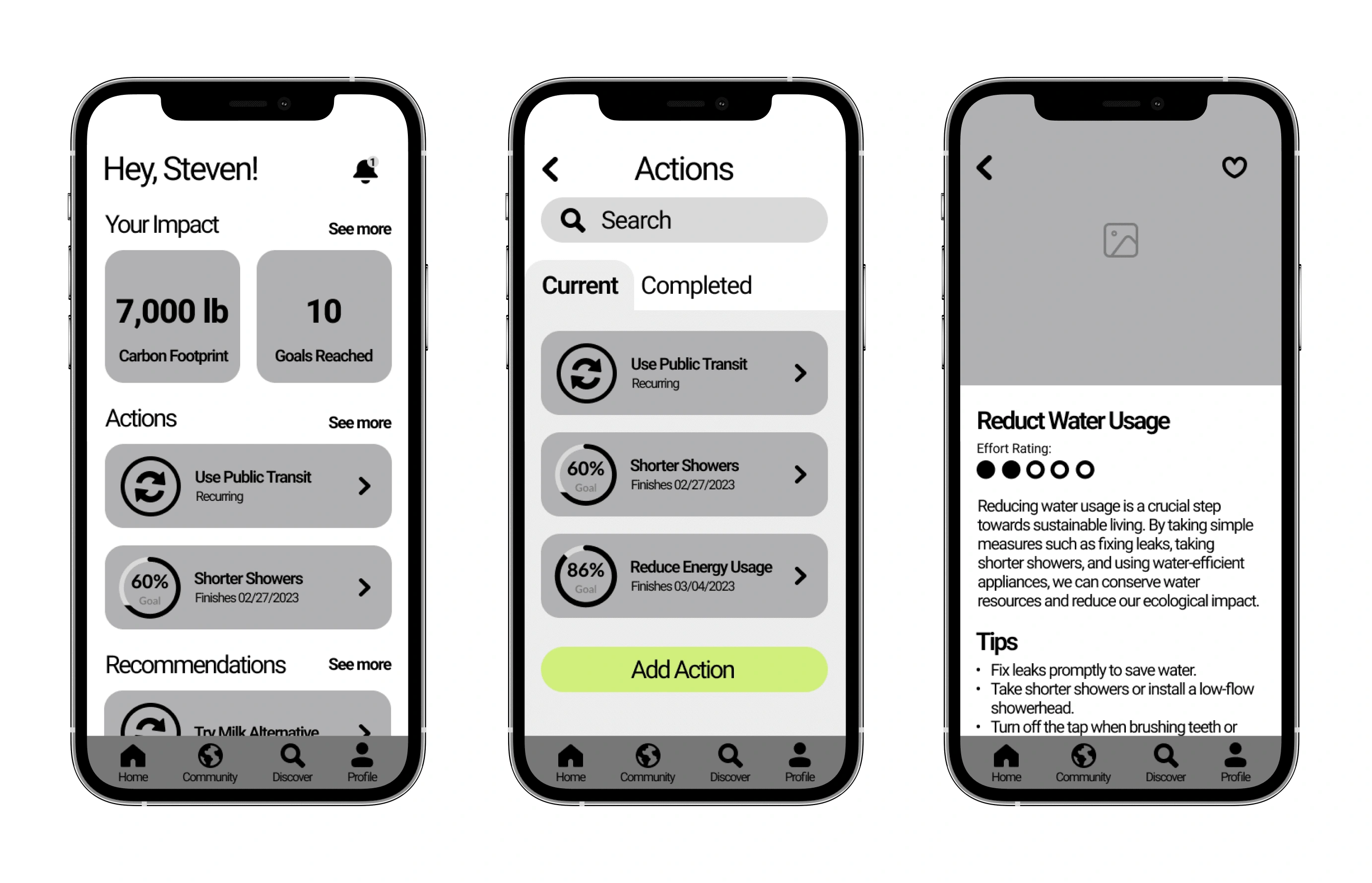
Moodboard
Moodboarding allowed me to vividly visualize the brand's identity, values, personality, and aesthetic. By carefully curating the images, I brought life into Ekosystem's fresh, friendly, and sustainability-focused spirit, serving as a compass for cohesive design decisions that would spark a meaningful connection with users.
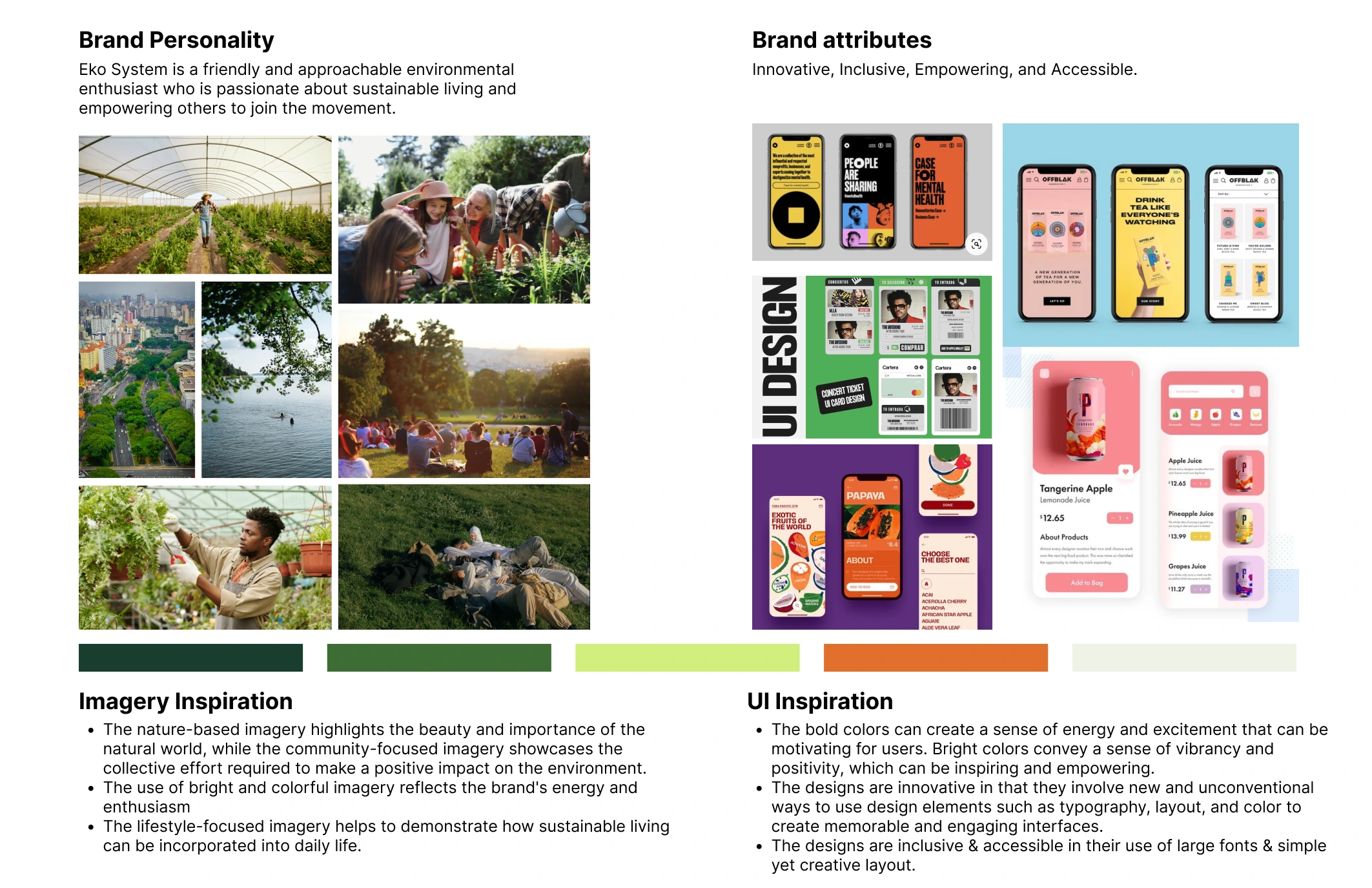
Style Guide
Developing Ekosystem's style guide involved defining a harmonious blend of color, typography, iconography, and imagery that strongly resonates with the app's brand identity.
The green, vibrant color scheme draws inspiration from nature, embodying sustainability and inspiring eco-friendly actions. The chosen fonts, both modern and legible, support a user-friendly experience while reflecting Ekosystem's innovative ethos. Iconography and imagery were designed for simplicity and universality, enhancing engagement and intuitiveness.
Altogether, the style guide helped establish a strong, recognizable brand identity, symbolizing Ekosystem's mission to make sustainable living accessible and enjoyable, while promoting design consistency throughout the app's development.
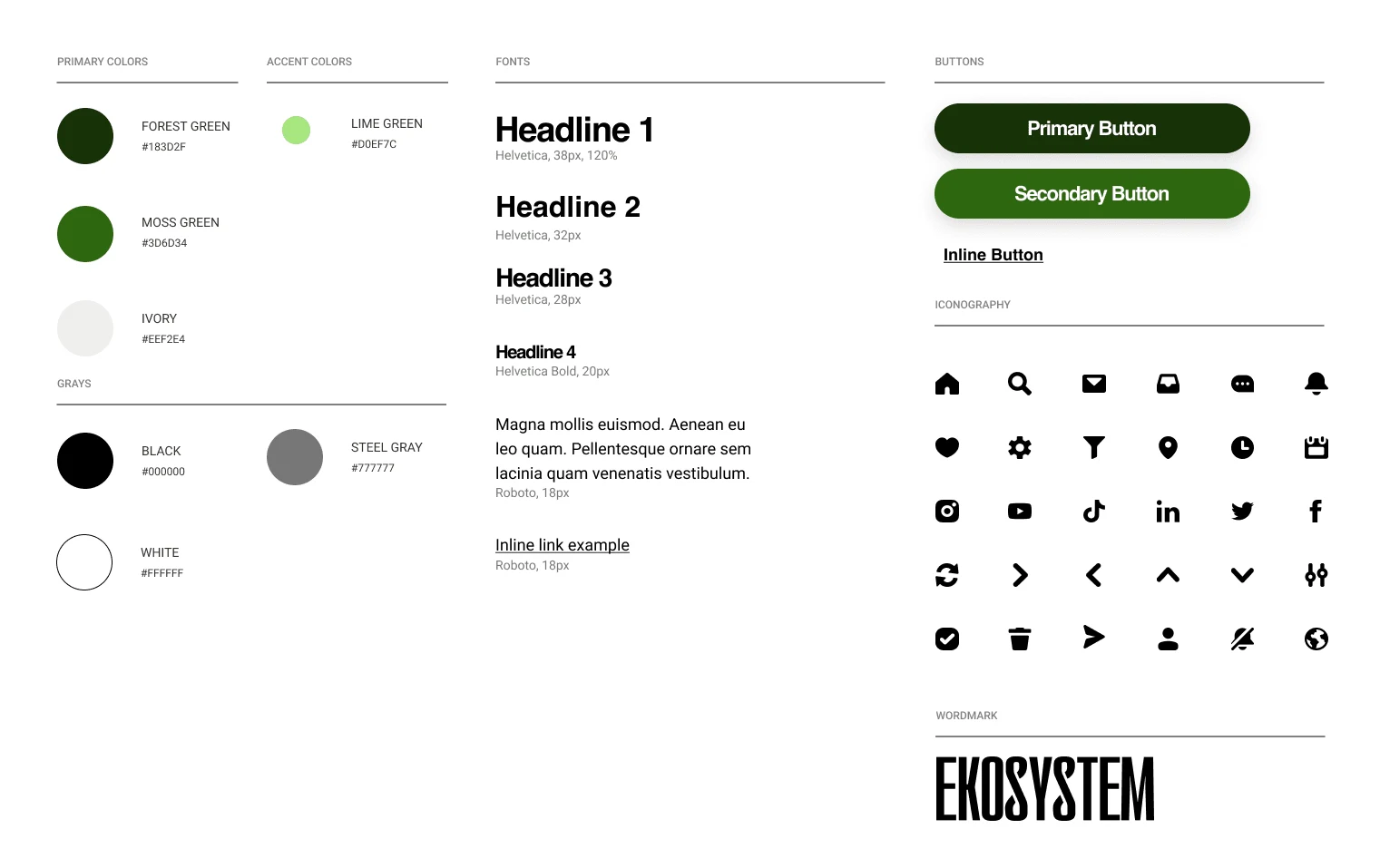
Hi-Fidelity Wireframes
Drawing from my style guide, I created high-fidelity UIs for Ekosystem to provide a clear understanding of the final product. The high-fidelity UIs helped me to showcase the details of the app's design and how the user interface would function. Through iterative design changes, I fine-tuned the user experience, prioritizing intuitive navigation and meeting industry usability standards.
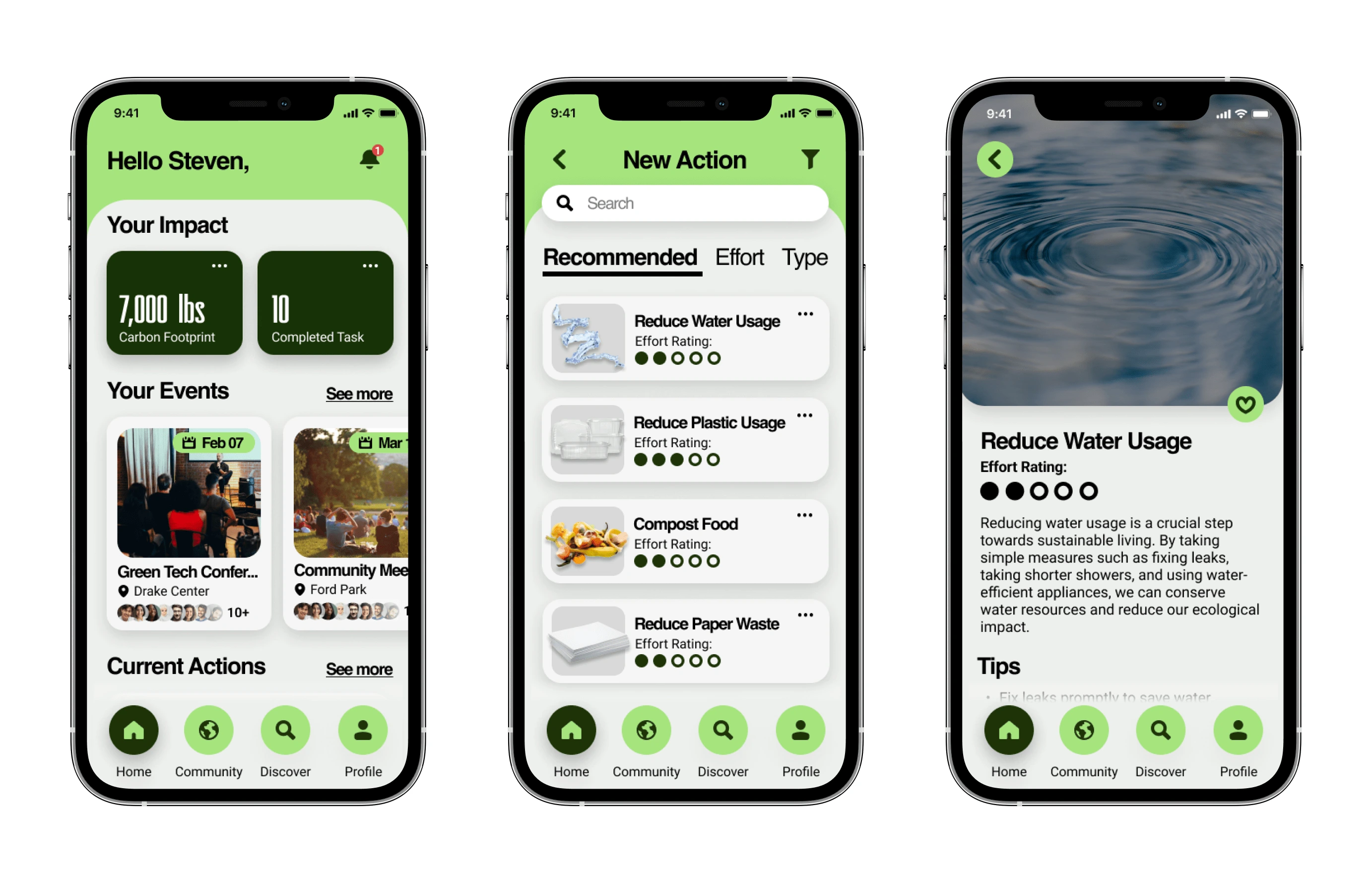
Ekosystem Prototype
I utilized Figma to transform the high-fidelity UI designs into an interactive prototype for Ekosystem. The prototype enabled me to witness real-time user interactions and ensure the inclusion of essential features like creating personalized actions, finding upcoming events, and discovering new eco-friendly products. This then allowed me to rigorously test and refine the app's usability and functionality, bringing it one step closer to its final form.
Testing 🧪
Usability Testing
The objective of the usability testing was to identify any usability issues and enhance the user experience of the Ekosystem app. The testing involved 5 participants who performed tasks such as setting up eco-friendly habits, RSVPing to eco-friendly events, and discovering/favoriting eco-friendly products. The testing was conducted remotely in a moderated setting.
Findings
Three main usability issues were identified during the testing.
Difficulty in accessing actions quickly - Users struggled to find a direct and quick way to access actions or create new ones.
Inadequate product information - Users felt that important product attributes were missing or unclear, such as the vegan status of a product.
A desire for additional motivation - Users expressed a need for features that would keep them motivated and engaged within the app.
Recommendations
Improve action access: To make accessing and setting up new actions more user-friendly, it was recommended to add a prominent "Actions" button in the navigation for quick access.
Enhance product information: Users requested more comprehensive information about the products. Including detailed product attributes like vegan status, ingredients, and whether the product is refillable can enhance user experience
Introduce motivation and engagement features: To enhance user engagement and motivation, several features were suggested. These include implementing progress trackers, rewards or incentives, and social sharing options.
Redesign
Incorporating the suggestions mentioned earlier, I implemented the necessary changes for the redesign. The most significant insight gained from this process is that conducting usability testing will reveal aspects that the designer overlooked entirely.
Features such as product tags & a quick “share” button were added to the product pages to make information quick to see & send to others
The navigation was changed in order to make sure users could quickly & easily set up actions related to sustainable living.
An overview of the user’s stats as it relates to actions was added to spark more visual interest and motivation in their accomplishments while also adding an opportunity for them to compete with friends.
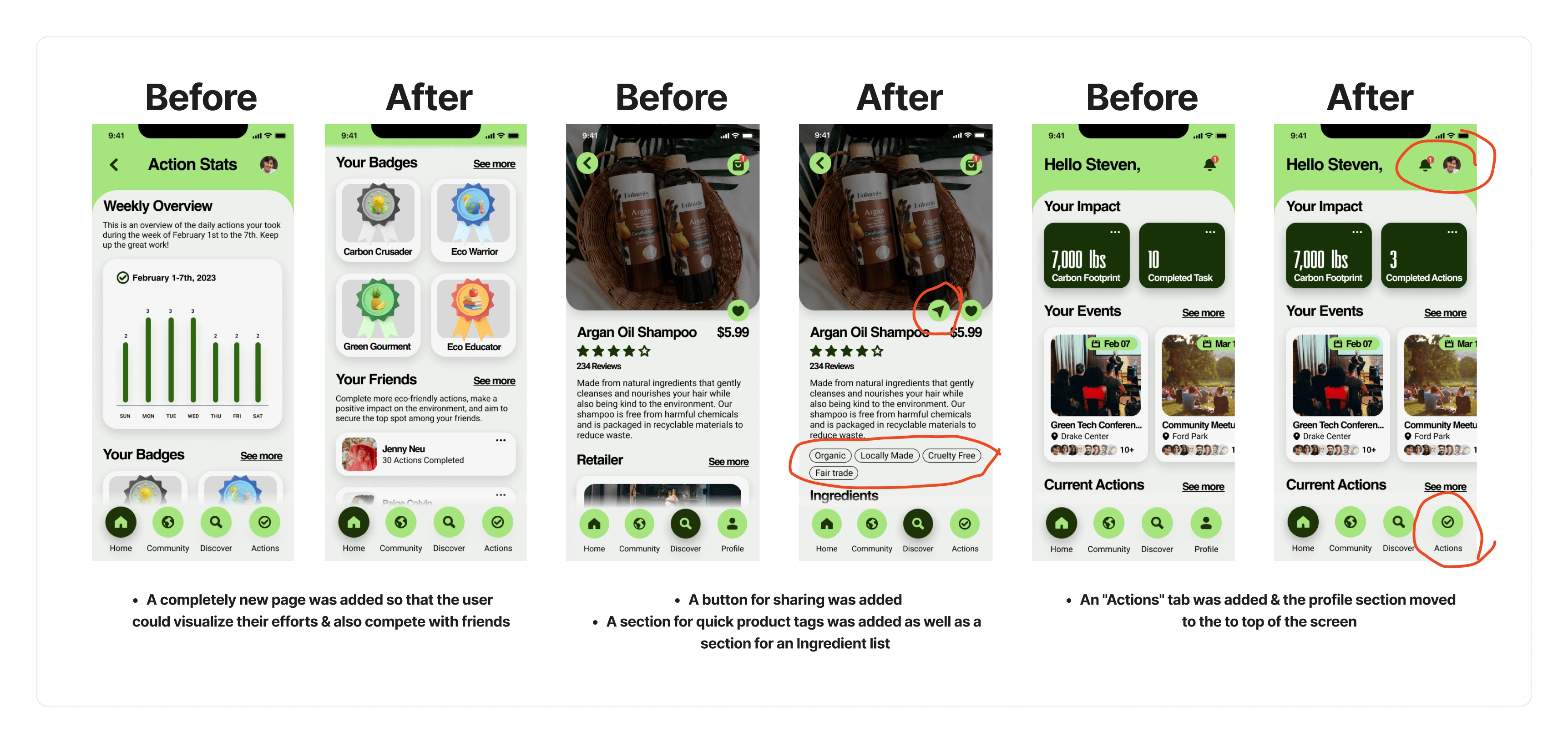
Reflections 💭
Changes for the Future
This journey has ignited my excitement to delve into innovative features such as gamification and social challenges to make the app even more engaging. The Ekosystem experience was more than a project; it was a pivotal stepping stone, broadening my understanding of design and sustainability. I'm eager to take these lessons and apply them to my future adventures in this vibrant field.
Previous Experience
As a graphic designer, my background allowed me to shape Ekosystem's branding and user interface design, intertwining aesthetic appeal and user-friendliness. With my project management skills, I kept the project organized and on schedule, delivering a top-quality app punctually.
Key Takeaways
The Ekosystem project was an experience that pushed my design boundaries, enlightening me on the criticality of comprehensive research and tailored user personas to craft a product that meets the target audience's unique needs. Through user interviews, I unearthed the need for reliable resources, accessibility, and a sense of community to encourage sustainable living.
Like this project
Posted Jun 20, 2023
UX/UI Designer. An app connecting users to eco-resources, fostering green habits, building an eco-community, and driving environmental change.
Likes
0
Views
788





